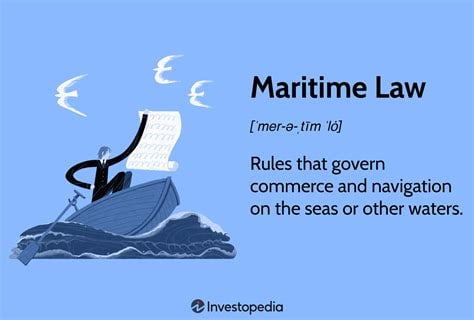
-
History of Maritime Law in the Philippines: A Comprehensive Exploration
- Introduction
- The Pre-Colonial Era: Maritime Customs and Traditions
- Spanish Colonization: The Birth of Formal Maritime Law
- The American Occupation: Modernization and Expansion
- Independence and Nationhood: Asserting Maritime Sovereignty
- Contemporary Maritime Law in the Philippines
- Key Maritime Laws in the Philippines
- Conclusion
-
FAQ about History of Maritime Law in the Philippines
- 1. When did maritime law first emerge in the Philippines?
- 2. What was the Spanish era’s impact on maritime law?
- 3. How did American rule influence maritime law?
- 4. What was the role of the Maritime Industry Authority (MARINA)?
- 5. How has the United Nations Convention on the Law of the Sea (UNCLOS) affected maritime law?
- 6. What are the key provisions of the Philippine Merchant Marine Code of 1978?
- 7. How have advancements in technology impacted maritime law?
- 8. What role does the Philippine Coast Guard play in maritime law enforcement?
- 9. Are there any challenges facing maritime law in the Philippines?
- 10. How does maritime law contribute to economic development?
History of Maritime Law in the Philippines: A Comprehensive Exploration

Introduction
Greetings, readers!
Welcome to our in-depth journey through the captivating history of maritime law in the Philippines. Throughout this article, we will delve into the fascinating evolution of legal frameworks governing maritime activities, trade, and disputes within Philippine waters. From ancient seafaring practices to contemporary regulations, we will uncover the rich tapestry of maritime law in the Philippines, a nation with an unbreakable bond with the sea.
The Pre-Colonial Era: Maritime Customs and Traditions
Before the arrival of European powers, maritime activities played a crucial role in Filipino society. Trading vessels crisscrossed the archipelago, and local communities developed customary laws and regulations to govern interactions at sea. These customs, known as "adat laut," provided a foundation for resolving disputes and ensuring the safety of seafarers.
Spanish Colonization: The Birth of Formal Maritime Law
The arrival of Spanish conquistadors in the 16th century marked a significant turning point in the history of maritime law in the Philippines. Spanish colonial authorities introduced formal legal frameworks based on European maritime codes, such as the Siete Partidas and the Ordenanzas de Bilbao. These laws established a standardized system for regulating ship ownership, trade, and navigation.
The American Occupation: Modernization and Expansion
American colonization brought further advancements to Philippine maritime law. The United States introduced admiralty courts and enacted legislation to modernize the legal framework. The Insular Customs Administrative Act of 1901 established the Philippine Customs Service, while the Coastwise Shipping Act of 1902 regulated domestic shipping.
Independence and Nationhood: Asserting Maritime Sovereignty
After gaining independence in 1946, the Philippines embarked on a transformative journey to assert its maritime sovereignty. The 1973 Constitution declared the Philippines an "archipelagic state" with a maritime jurisdiction that extended beyond its territorial waters. Subsequently, the country ratified the United Nations Convention on the Law of the Sea (UNCLOS), further solidifying its maritime rights.
Contemporary Maritime Law in the Philippines
Today, Philippine maritime law has evolved into a complex and multifaceted legal framework. It encompasses various areas, including:
-
Shipping and Navigation: Laws governing the operation of vessels, safety regulations, and maritime transportation services.
-
Marine Environmental Protection: Legislation protecting coastal and marine ecosystems from pollution and exploitation.
-
Fisheries Law: Laws regulating the harvesting, conservation, and management of marine resources.
-
Maritime Dispute Resolution: Frameworks for resolving disputes arising from maritime activities, including arbitration and litigation.
Key Maritime Laws in the Philippines
| Law | Year Enacted | Purpose |
|---|---|---|
| Philippine Merchant Marine Law (P.D. 474) | 1974 | Regulates merchant shipping and maritime transportation |
| Maritime Industry Authority Act (RA 9295) | 2004 | Establishes the Maritime Industry Authority (MARINA) as the primary regulatory body for maritime affairs |
| Marine Pollution Prevention Law (RA 9728) | 2009 | Protects marine ecosystems from pollution |
| Philippine Fisheries Code (RA 10654) | 2015 | Regulates the capture, culture, and conservation of marine resources |
| Philippine Arbitration Law (RA 9285) | 2004 | Provides a framework for arbitration of commercial disputes, including maritime disputes |
Conclusion
The history of maritime law in the Philippines is a testament to the nation’s deep-rooted maritime heritage and its commitment to regulating and protecting its vast maritime domain. From ancient seafaring practices to contemporary laws, the evolution of maritime law has played a pivotal role in ensuring the safety, order, and sustainability of marine activities in the Philippines.
As we continue to navigate the changing tides of global trade and environmental challenges, the history of maritime law serves as a valuable reminder of the importance of legal frameworks in shaping the future of our maritime nation.
We invite you to explore our other articles to delve deeper into the fascinating world of law and its impact on Philippine society.
FAQ about History of Maritime Law in the Philippines
1. When did maritime law first emerge in the Philippines?
A: During the pre-colonial era, with the existence of the "Code of Kalantiaw" and other customary laws.
2. What was the Spanish era’s impact on maritime law?
A: The Spaniards introduced the "Leyes de Indias" (Laws of the Indies), which governed maritime commerce, navigation, and shipbuilding.
3. How did American rule influence maritime law?
A: The United States introduced the "Philippine Commission Act No. 184" in 1901, establishing a formal system of maritime law based on American principles.
4. What was the role of the Maritime Industry Authority (MARINA)?
A: MARINA, established in 1988, is the government agency responsible for regulating and enforcing maritime laws and policies in the Philippines.
5. How has the United Nations Convention on the Law of the Sea (UNCLOS) affected maritime law?
A: The Philippines’ ratification of UNCLOS in 1984 extended its maritime jurisdiction and established international norms for maritime activities.
6. What are the key provisions of the Philippine Merchant Marine Code of 1978?
A: The code regulates the registration, inspection, and operation of Philippine merchant vessels engaged in domestic and international trade.
7. How have advancements in technology impacted maritime law?
A: Developments in navigation, communication, and ship design have led to amendments and updates to maritime laws to ensure safety and prevent accidents.
8. What role does the Philippine Coast Guard play in maritime law enforcement?
A: The Coast Guard is responsible for enforcing maritime laws, protecting the marine environment, and assisting in search and rescue operations.
9. Are there any challenges facing maritime law in the Philippines?
A: Challenges include piracy, marine pollution, illegal fishing, and the need for modernizing maritime infrastructure.
10. How does maritime law contribute to economic development?
A: Maritime law supports the growth of shipping, trade, and transportation industries, vital for the Philippine economy.





